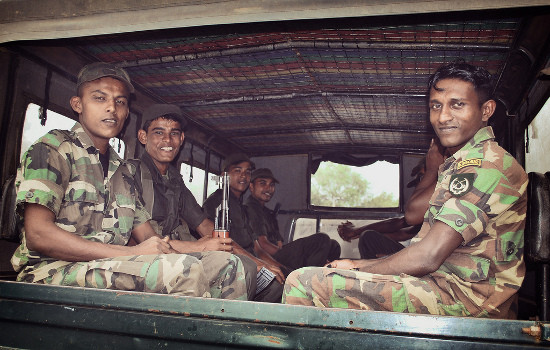Oliver Walton is a research fellow in the Governance and Social Development Resource Centre. His areas of interest include NGO legitimacy, civil society peacebuilding, conflict prevention, war-to-peace transitions, and Sri Lankan politics.
The military victory of the Sri Lankan armed forces over the Liberation Tigers of Tamil Eelam (LTTE) in May 2009 marked the end of a civil war that had endured more than twenty five years. While it is arguably too early to draw clear lessons from the Sri Lankan experience, nearly two years on it is possible to generate some tentative conclusions about the kind of political settlement that is emerging in the post-war period.
As was widely reported in the international media at the time, the government’s successful military capture of the dwindling LTTE strongholds in the North during the final months of the war had severe consequences for the civilian population of the region, with many thousands of civilians killed, injured and traumatised. A 2010 report from the International Crisis Group provided credible evidence that the government breached international humanitarian law during these final months by engaging in the intentional shelling of civilians, hospitals and humanitarian operations. There is also strong evidence that the LTTE used civilians as human shields to protect their fighters and shot those that fled.
Although many Sri Lankans are relieved that the war is over, and amongst some there is a degree of optimism that has not existed for several decades, many others are still traumatised or grieving for relatives and friends that were killed in the final stages of war. Minority communities still harbour grievances about post-war developments and frustration that the underlying issues of political marginalisation and discrimination that fuelled conflict have not been addressed.
 A number of key trends can be identified in the post-war period. First, the process of heavy militarization of Sri Lankan politics and society associated with the last phase of the war has carried through into peacetime. The defence budget has increased and the army have become heavily involved in reconstruction activities in the North and East. More broadly, the government has sought to elevate the position of the veteran society within Sri Lankan society – a move that is strikingly captured by the launch of reality TV programme ‘Ranaviru Real Star‘, a Sri Lankan take on X Factor where the only contestants are servicemen.
A number of key trends can be identified in the post-war period. First, the process of heavy militarization of Sri Lankan politics and society associated with the last phase of the war has carried through into peacetime. The defence budget has increased and the army have become heavily involved in reconstruction activities in the North and East. More broadly, the government has sought to elevate the position of the veteran society within Sri Lankan society – a move that is strikingly captured by the launch of reality TV programme ‘Ranaviru Real Star‘, a Sri Lankan take on X Factor where the only contestants are servicemen.
A second major trend has been a growing centralisation of power around President Mahinda Rajapaksa, his party and his immediate family. A constitutional amendment was passed in September 2010 which abolished the two-term limit on the Presidency, allowing Rajapaksa to stand for a third term and granting the President greater powers to make political appointments in the civil service and use state resources in elections. Another amendment, which may dilute the existing powers of the provincial councils and MPs, is under consideration, while Rajapaksa’s son, Namal, is being groomed for high office.
Third, the climate of fear that grew during the conflict has been consolidated in the post-war period. It is now difficult for any political opponents to challenge the dominant political discourse, which prioritises economic progress over a renegotiation of the political settlement between the state and minority communities. Although levels of violence against journalists and NGO workers have declined since 2009, intimidation and censorship continues, and a number of prominent journalists have been arrested or forced to move overseas.
 Photo credit: Daria Wadsworth
Photo credit: Daria Wadsworth
Sri Lankan soldiers in Polonnaruwa
The government’s efforts to promote reconciliation and political dialogue have been limited. A ‘Lessons Learnt and Reconciliation Commission’ was appointed to investigate the causes and consequences of the war in 2010, but this mechanism was widely criticised by international human rights groups, who argue that the Commission fails to meet international standards of impartiality. Some have seen more promising signs from a nascent political dialogue between the President and the Tamil National Alliance (TNA), the main Tamil party in Sri Lanka, but these talks are in their early stages.
Sri Lanka’s post war experience highlights some of the potential pitfalls associated with using military victory as a solution to civil war. The Sri Lankan armed forces’ victory relied on providing greater operational freedom for the armed forces, a reliance on nationalist forms of political mobilisation, and strict regulation of the media. While these characteristics helped Rajapaksa to win the war and have prevented an immediate return to violence, they have also limited his ability to win the peace. The political alliances, ideological orientation, and networks of patronage that emerged during the war have proven difficult to escape during peace time.
